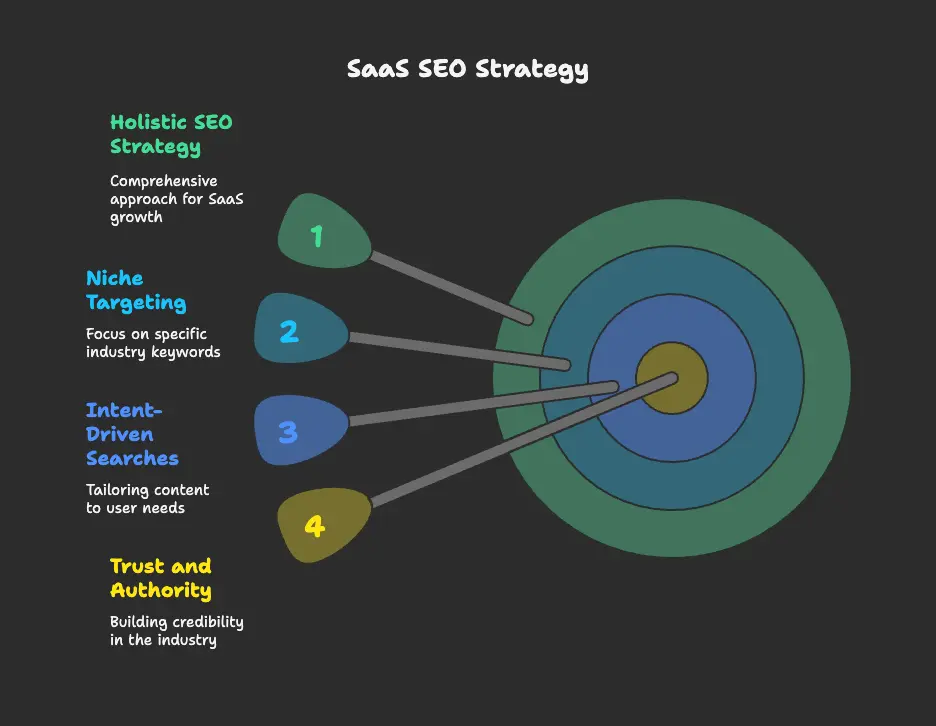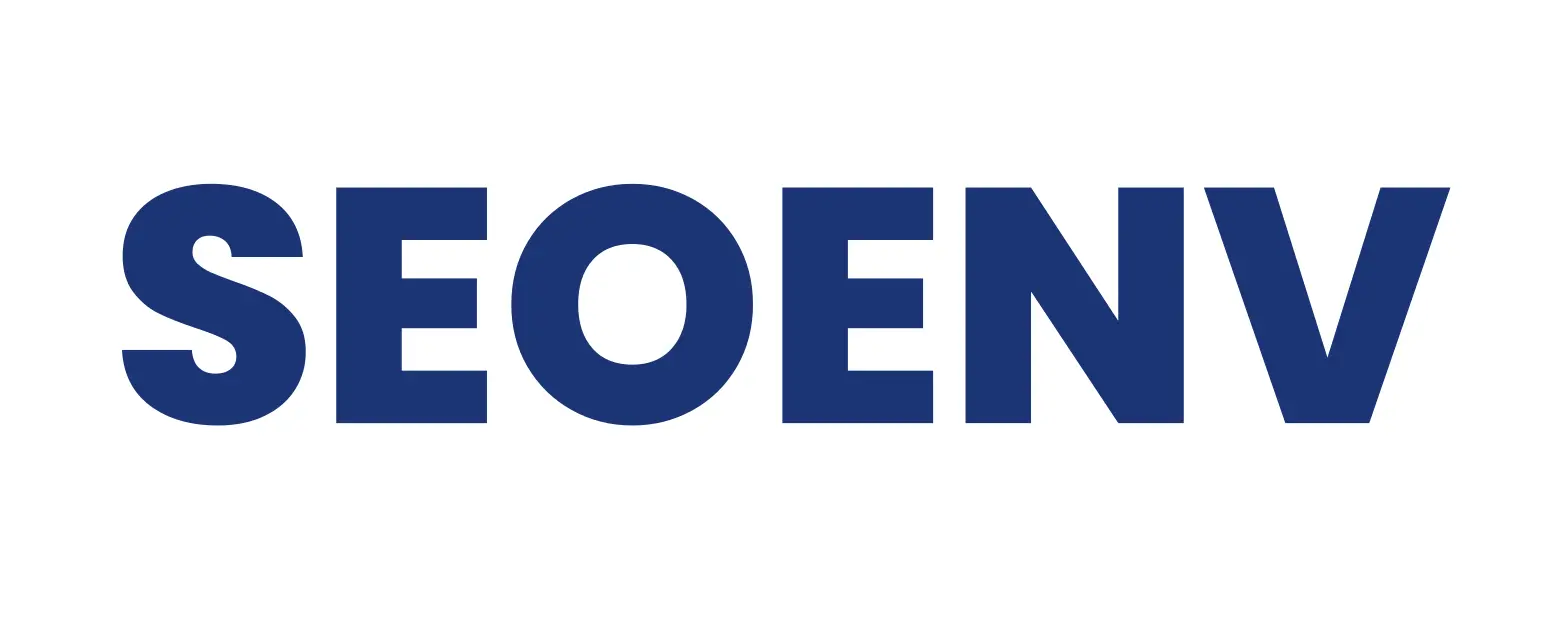SaaS SEO Strategy for 2025: The Complete Guide
Search Engine Optimization (SEO) for SaaS has changed dramatically over the past few years. The strategies that worked in 2020 aren’t enough to keep up with today’s competitive landscape. Gone are the days when stuffing your blog with niche-specific keywords guaranteed traffic. Welcome to SaaS SEO in 2025, where technical excellence, AI-driven tactics, and topical authority reign supreme.
This guide will take you through a complete SaaS SEO strategy tailored for 2025 and beyond. Whether you’re a CMO, a founder, or an SEO strategist, this roadmap will help you future-proof your content, rank higher in search engines, and drive measurable ROI.
SaaS SEO has shifted from keyword stuffing to an intent-led, AI-powered ecosystem. This guide reveals how to dominate organic rankings in 2025 by leveraging topical authority, scalable content systems, AI tools, and ROI-focused metrics. Whether you’re a founder, CMO, or strategist, this is your go-to SaaS SEO playbook.
SaaS SEO Today
Traditional strategies such as manual keyword targeting are evolving. SaaS companies now operate in an environment where Google SGE (Search Generative Experience), AI-influenced SERPs, and core algorithm updates dictate how visibility is gained. The foundation of SaaS SEO today is no longer keywords alone; the focus has shifted to entities, topical maps, and trustworthiness.
Why SaaS SEO Is Different

SaaS businesses compete for niche, intent-driven searches that directly impact revenue. For example:
- A CRM platform might target “best CRM for small business” (BOFU intent) because it converts directly into product trials.
- A project management tool could aim for “how to improve workplace productivity” (TOFU intent), capturing leads at the awareness stage.
The stakes are high. If you neglect SEO, your competitors will claim top positions, leaving your growth stagnant.
Key takeaway: SaaS SEO in 2025 is holistic, requiring precision and a focus on building trust and authority in your industry.
Keyword Research for SaaS
Finding the Right Keywords Is About Understanding User Intent
Keyword research is no longer about volume alone. It’s about matching user intent and mapping keywords to the proper stage of the funnel:

- TOFU (Top of the Funnel): Broad, awareness-level topics. Example – “What is project management?”
- MOFU (Middle of the Funnel): Consideration-level searches. Example – “Best project management apps.”
- BOFU (Bottom of the Funnel): Highly transactional intent. Example – “Buy project management software.”
How to Match Keywords to Intent and Revenue
Not all keywords lead to revenue. A high-volume keyword like “free CRM software” might generate several leads but could have a lower conversion rate. Meanwhile, “CRM for remote teams” might have lower volume but higher intent.
Use diagrams to visualize this flow. For example:
- Start with primary keywords like “SaaS project management tool” and branch out into related queries such as “how to organize remote teams” or “common productivity challenges.”
- Tools like SEMrush and Ahrefs allow you to identify these long-tail, high-intent keywords.
Building Topical Authority
Launch a Topical Hub, Not Just a Blog
Think of your SaaS website like a Netflix library, with content silos functioning as categories. A topical hub ties related content together, building your relevance and authority for a specific subject.
Example of a Topical Authority Strategy
- Seed Keyword: “CRM tools for small business.”
- Topical Map:
- Blog 1: “What is CRM Technology?”
- Blog 2: “Benefits of CRM for Small Businesses.”
- Blog 3: “Top 5 Affordable CRM Tools for 2025.”
- Blog 4: “How CRM Improves Customer Retention.”
- Blog 5 (BOFU): “Why [Your Brand] Is the Best Option for Small Businesses.”
- Link all these articles together internally to promote discoverability and user engagement.
Why Content Siloing Matters
When you organize your SaaS content into silos, search engines see your site as an authoritative source for a topic, leading to higher rankings.
Quick Start Framework:
- Choose a high-value topic.
- Outline 10-20 subtopics.
- Create in-depth blogs, linking them together.
Technical SEO for SaaS
A strong technical foundation is your pipeline for indexing and ranking.
- Core Web Vitals and Mobile-First Design: Ensure your page loads fast, works on mobile devices, and provides a seamless user experience.
- XML Sitemap and Robots.txt: Maintain a complete sitemap and ensure your robots.txt file guides bots to the most valuable pages.
- Schema Markup: SaaS-specific schemas like Product Schema or FAQ Schema help search engines understand your content better and provide rich snippets on SERPs.
Pro tip: If your SaaS services multiple countries, implement Hreflang Tags to target content accurately by language and region.
Leveraging AI for Scalability
AI Tools for SaaS SEO
From content creation to audits, AI can supercharge your strategy when used correctly.
Top tools include:
- Jasper for high-quality content tailored to your guidelines.
- SurferSEO to optimize blogs based on competitor benchmarks.
- ChatGPT for brainstorming and initial drafts (human editing required).
Use AI Smartly
AI is not a replacement but an enhancer. Example use cases:
- Prompt Jasper to create article outlines based on keyword sets.
- Use SurferSEO to ensure blogs meet on-page optimization standards.
- Layer in human creativity to ensure content resonates with your audience.
Link Building for SaaS
Forget spammy backlinks. Focus on building authentic link assets.
- Create valuable resources (eBooks, whitepapers) that others will link to naturally.
- Pitch guest blogs on industry-relevant sites.
- Build relationships with influencers who can amplify content.
Key tools:
- HARO (Help a Reporter Out)
- BuzzSumo for content partnerships
Pro tip: Treat your backlinks like votes of confidence. Quality matters more than quantity.
Crafting Content for Conversions
BOFU content is your secret weapon for driving results. This is where you can target high-converting keywords like “best CRM for marketing agencies.”
Include clear CTAs in every piece:
- “Book a free demo.”
- “Try our software for free.”
- “Download the full guide.”
Remember, make CTAs compelling and relevant to the action you want users to take.
Measuring ROI for SaaS SEO
An SEO strategy is incomplete without tracking progress.
Tools You’ll Need
- Google Analytics 4 (GA4): Track organic visits and conversions.
- Google Search Console (GSC): Monitor keyword performance and page rankings.
- CRM for lead attribution to specific pages.
Focus on this mantra: “SaaS SEO without ROI is just a hobby.”
Track outcomes like:
- Organic conversions
- Customer acquisition cost (CAC)
- Lifetime value (LTV)
Pro tip: Build dashboards to align SEO metrics with business KPIs.
Prepare for a Strong 2025 with This Checklist
- Conduct Intent-Based Keyword Research
- Build Topical Authority Maps
- Optimize Core Web Vitals & Schema
- Leverage AI for Scalability
- Create BOFU Content with Strong CTAs
- Earn High-Quality Backlinks
- Track ROI Through Analytics
Bonus: Download our free SaaS SEO Strategy Scorecard to assess your growth opportunities today.


